Read more
The post Washington reestablishes its solar incentive program appeared first on solarpanel4free.com.
]]>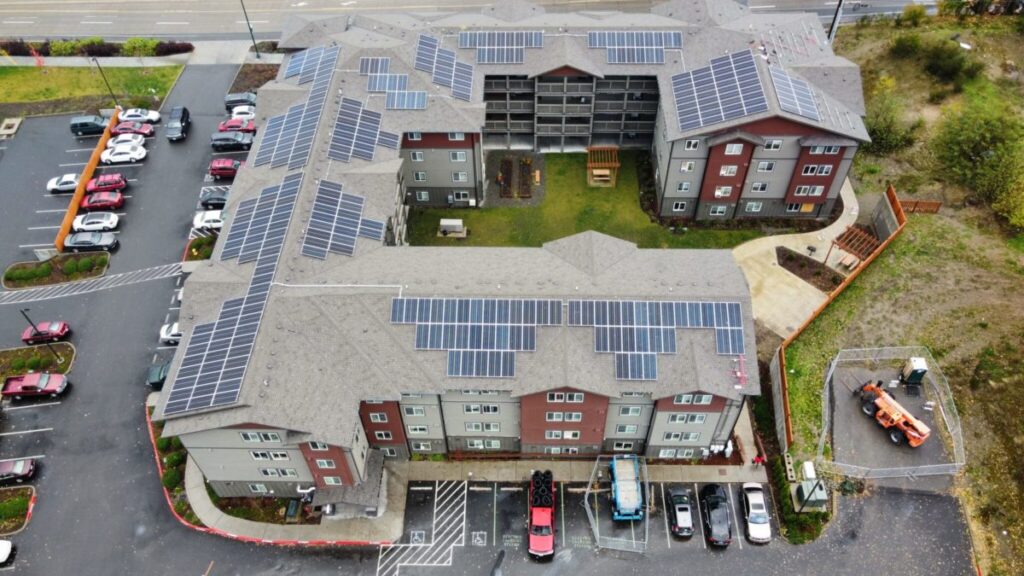
For the first time since 2018, Washington state has a solar energy incentive program, Governor Inslee signed House Bill 1814, into law on March 30th, which was first proposed by Representatives Sharon Shewmake and Liz Berry.
Aimed at expanding the opportunities for low-income residents to access renewable energy through an increased focus on installing community solar projects in the state, HB 1814 creates a new $100 million incentive program, beginning in 2023, that will provide funding for low-income households and low-income service providers’ installing solar. Like the state’s previous solar incentive programs, Washington State University (WSU) Energy Extension will manage the $100 million in funding, providing grants to community solar projects around the state.
“Everyone needs to be a part of the green energy future,” said Shewmake. “In the past, solar energy incentive programs have primarily benefited people who can dole out cash for the panels and installation. We can do more to include everyone in the transition to a green economy and together, with this bill, we will.”
From 2017 to 2018, Washington State ran a rooftop solar incentive program, through WSU’s Energy Program, which provided $110 million to customers who completed residential and commercial solar energy installations. The program led to the installation of nearly 7,500 residential energy systems, 380 commercial energy systems, and more than 100MW of solar capacity.
The new program is in part the result of a three-year effort by Olympia Community Solar, a small non-profit, to pass policy that recognizes the growing need for equity in the energy economy. The organization’s first community solar installation in Washington was the Hummingbird Project a 117kW rooftop project located at the Hands On Children’s Museum in Olympia, WA. In February 2021, Olympia was granted $341,732 by the Washington State Department of Commerce to install a 126 kW solar system at an affordable housing complex in Olympia. Generation from the solar project will offset residents’ electric bills.
“The benefits of solar energy should be accessible to everyone, regardless of where they live or their income,” said Mason Rolph, president of Olympia. “This legislation is a small step in Washington’s progress toward a clean, affordable, and just clean energy transition. Projects resulting from the fund will not only reduce pollution, they will also reduce poverty.”
From: https://pv-magazine-usa.com/2022/04/04/washington-reestablishes-its-solar-incentive-program/
The post Washington reestablishes its solar incentive program appeared first on solarpanel4free.com.
]]>Read more
The post New solar trailer bus from Sono Motors appeared first on solarpanel4free.com.
]]>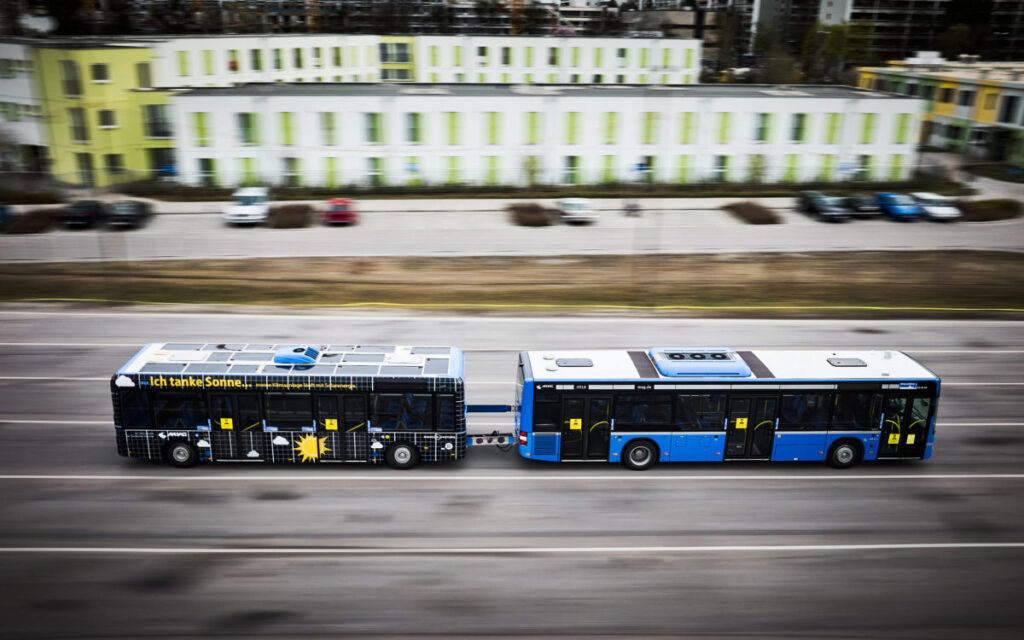
Sono Motors, an electric vehicle maker with a focus on integrating solar PV with transportation, announced it has deployed its solar technology on the municipal bus fleet in Munich, Germany. The buses will be attached with a trailer that is topped with 20 semi-flexible solar panels.
The modules cover an area of 12 square meters and supply the 24V battery with over 2,000W. In this pilot, the solar energy generated will be used to operate the HVAC system and to support the trailer steering system. This saves the bus from burning diesel and stabilizes the battery’s energy supply, which lowers maintenance costs and extends battery lifecycle.
The PV system was custom-built for the needs of buses, and features the company’s proprietary maximum power point tracker (MPPT) unit and an algorithm-enabled charge controller designed to optimize energy production. Production can be tracked online through integrated software.
After technical approval by supervisory authorities, the bus trailer will go into regular service, providing cleaner transportation for Munich residents. “We need a change of course in the transport sector. Transport still misses the climate protection targets by a very wide margin, and this also has a direct impact on air quality in Munich. The solar buses can be a cornerstone in this urgently needed change towards climate-friendly mobility,” said Katrin Habenschaden, Munich vice mayor.

The company said a medium-sized fleet of 300 buses could save about 2,000 metric tons of C02 emissions each year. When considering the 1.5 ton C02 emissions “backpack,” or the amount of emissions related to producing the bus trailer, the carbon impact of production would be offset in less than one year of operation.
“The photovoltaic system on our bus trailer now allows us to test under real conditions how well the power generation works and whether there are perhaps routes in our network that are better suited than others for this type of power generation. The question of what energy savings can be achieved by using solar energy are, of course, particularly exciting against the background of current fuel and energy prices.” Veit Bodenschatz, Managing Director and Head of Bus Division of the MVG
Sono Motors said its solar technology has been designed so that it can be integrated with a large range of vehicles. E-buses can be integrated with PV on their roofs and sides, extending range, reducing standstill times for charging processes, and protecting the battery for a longer life through steady power cycling.
The company said it has signed more than ten letters of intent and contracts with companies like MAN, ARI Motors, and easymile. The company’s complete solution includes customized solar modules, power electronics, telematics and data, mechanical and electrical integration, and after-sales service. The technology is suitable for integration into existing vehicles and ready to be integrated with the production of new vehicles, said Sono Motors.
“Especially in times of rising energy prices and increasing urban area emission regulations, our solar technology offers great added value for public transport operators. City buses and coaches, whether electric or diesel-powered, offer a lot of space and are out on the road every day. The first solar bus trailer for MVG will hit the streets of Munich in the future and allow MVG passengers to experience solar mobility in daily use.” Laurin Hahn, co-founder and CEO of Sono Motors.
The Sion passenger EV

Image: Sono Motors
Sono Motors is also developing its own passenger vehicle, the Sion. The Sion sports a liquid cooled battery with a 54kWh battery and a 190 mile range and has 248 solar cells seamlessly integrated in the roof. The PV on the roof can add between 70-150 miles per week to that range.
The car can be charged 80% in 35 minutes via a fast charger, and is capable of public charging, at-home charging, and can exchange power vehicle-to-vehicle. Preorders are available in the German market.
Sono said the former SAAB plant that will be used to produce the Sion will be powered by 100% renewable energy.
From: https://pv-magazine-usa.com/2022/03/31/new-solar-trailer-bus-from-sono-motors/
The post New solar trailer bus from Sono Motors appeared first on solarpanel4free.com.
]]>Read more
The post World will need 5.2TW of solar this decade to avoid climate breakdown appeared first on solarpanel4free.com.
]]>
The world will need 5.2TW of solar power generation capacity by 2030, and 14TW by mid century, to have any chance of limiting global average temperature rises this century to 1.5 degrees Celsius, the International Renewable Energy Agency (Irena) said today.
The Abu Dhabi-based international body launched the latest edition of its World Energy Transitions Outlook report at the Berlin Energy Transition Dialogue event and director-general Francesco La Camera, writing the foreword, spelled out: “Progress across all energy uses has been woefully inadequate.”
The world will have to install 450GW of new solar capacity each year – most of it utility scale – for the rest of this decade, with China and India to lead Asia to a roughly half share of the world’s installed PV capacity in 2030, the report’s authors estimated.
What is needed
Elsewhere, North America will need to install 90GW per year of solar to claim a 14% share of the world’s operating panels at the end of the decade, and Europe’s 19% slice of the pie will require 55GW of annual solar capacity additions.
European funding will also help North Africa make its contribution to the 70GW of annual solar capacity additions which will be required across the Middle East and Africa with European energy demand ensuring grid connections with North Africa flourish.
To have a hope of avoiding the worst effects of climate change, Latin America will need 20GW of new solar annually this decade and a further “more than 2GW” will be needed each year across the Oceania and Pacific region, the Irena report estimated.
Of course, it is not just solar that the world needs and, with the 348-page report calling for massive electrification and energy efficiency efforts, enabled by the full suite of clean energy sources, hydrogen, and biomass, we will have to start devoting $5.7 trillion per year to the energy transition for the rest of the decade, according to Irena.
That can be feasible if the $700 billion per year channeled into fossil fuels is immediately diverted to the transition, the publication stated. Public investment in the transition will have to immediately double, too, said Irena, to attract the remaining money needed from the private sector, which would bear most of the financial burden.
Jobs
In return for the investment sought – including to ensure there are 147 million electric vehicles (EVs) per year hitting the roads in 2050, that $131 billion is invested annually in EV charging by that point, and that 350GW of green hydrogen electrolyzers are operating as early as 2030 – the world can anticipate a jobs dividend.
Irena has estimated the 12 million job losses it anticipates in the fossil fuel and nuclear industries will be comfortably outweighed by “close to” 85 million new energy-transition roles this decade, including 26.5 million in clean energy.
It is all a matter of political will, Irena pointed out, with policymakers also needing to usher in sufficient international grid connections and flexibility; training; utility scale batteries; electricity demand-side management; digital tools; peer-to-peer power trading; community ownership of renewables; time-of-use energy tariffs; and net billing systems.
From: https://pv-magazine-usa.com/2022/03/29/world-will-need-5-2tw-of-solar-this-decade-to-avoid-climate-breakdown/
The post World will need 5.2TW of solar this decade to avoid climate breakdown appeared first on solarpanel4free.com.
]]>Read more
The post Connecticut colleges and universities to benefit from solar appeared first on solarpanel4free.com.
]]>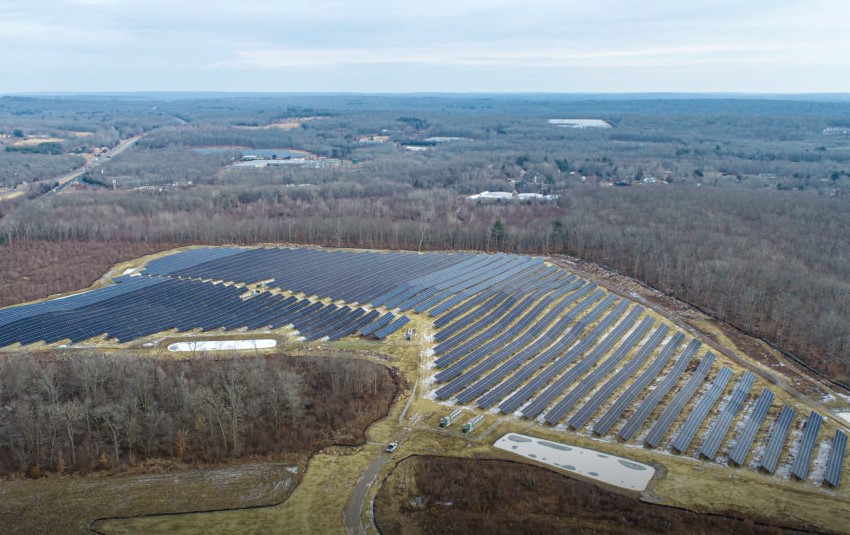
A solar farm that was recently installed in North Stonington, Connecticut is expected to provide more than $9 million in energy savings for five Connecticut State Colleges and Universities (CSCU) campuses.
Greenskies Clean Focus recently completed the second of nine off-site solar systems planned for the CSCU. The 6.1MW ground-mounted solar system is expected to help the CSCU save an estimated $9.4 million in energy savings in the first 20 years.
Using virtual net metering, the solar farm will allocate power to five CSCU campuses across the state, using virtual net metering. Those campuses include: Central Connecticut State University in New Britain, Eastern Connecticut State University in Willimantic, Western Connecticut State University in Danbury, Manchester Community College in Manchester and Tunxis Community College in Farmington.
“In addition to the financial benefits, this project is expected to generate upwards of 8.8 million kWh of clean, renewable energy every year,” said Stanley Chin, president and CEO of Greenskies.
The installation is expected to offset 125,000 metric tons of carbon dioxide over the next twenty years– the equivalent of taking more than 27,000 cars off the road or preserving over 153,000 acres of US forests.
The solar farm consists of nearly 14,000 solar panels across about 27 acres of land.
The 6.1MW installation moves Connecticut forward in its solar penetration. According to the Solar Energy Industries Association, Connecticut is one of the fastest growing of the smaller states in the solar industry, and currently gets 2.63% of its electricity from solar. Its success is due in part from the state’s Connecticut Property Assessed Clean Energy (C-PACE) program that offers property assessed clean energy financing and program services to municipalities and commercial property owners throughout Connecticut.
From: https://pv-magazine-usa.com/2022/03/29/connecticut-colleges-and-universities-to-benefit-from-solar/
The post Connecticut colleges and universities to benefit from solar appeared first on solarpanel4free.com.
]]>Read more
The post Construction begins for Meta (Facebook) $90 million solar project appeared first on solarpanel4free.com.
]]>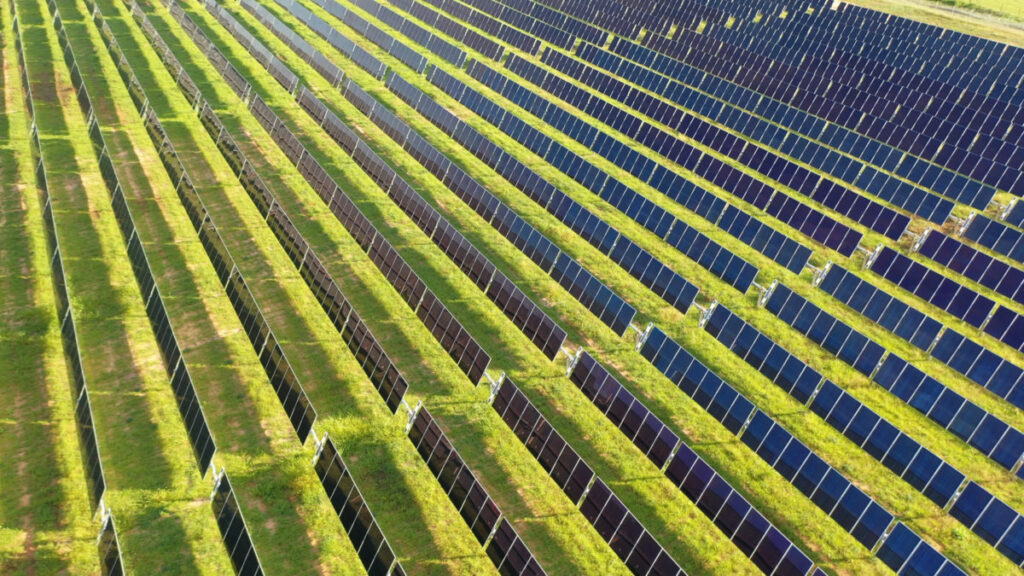
Another solar project built to meet the needs of Meta (Facebook) operations is underway, with a 70MW project in Tennessee Valley Authority (TVA) territory breaking ground recently. Silicon Ranch is the project developer, a firm that has partnered with the tech giant on numerous renewable energy projects in the past.
The project, called McKellar Solar Farm, was launched through TVA’s Green Invest program. The program is a platform for corporations looking to meet their environmental and climate goals by investing in renewables projects in TVA territory. Under the program, corporations typically sign a contract to purchase the project’s solar energy for 20 years.
Tennessee’s own Silicon Ranch will fund, own, operate, and maintain the solar project, which has an estimated cost of $90 million.
“TVA is the nexus for reliable, economical renewable energy solutions, and we have already committed $3 billion to bring more than 2,000 MW of new solar to the Valley since 2018. This public-private partnership with Meta and Silicon Ranch demonstrates the strength of TVA’s community energy model to attract capital investment and high-quality jobs into the communities we serve while helping businesses meet their sustainability goals.” Doug Perry, TVA senior vice president, commercial energy solutions
The Metaverse is real
Last April, Facebook announced it supported 100% of its operations with renewable energy by the end of 2020. Now, it targets net-zero across all value chains by 2030. Over the last three years, the social media giant cut its greenhouse gas emissions by 94%, exceeding its initial 75% reduction goal.
Facebook is no stranger to participating in large solar projects. It partnered with Silicon Ranch on three projects in Georgia with a combined capacity of 287MW, another 120MW in Utah, 160MW of solar in Virginia, and has 475MW in total PV projects contracted under TVA’s Green Invest program.
Facebook’s aggressive renewable energy sourcing is an environmentally responsible decision, but the high level of procurement brings attention to an important point: the internet is not free. While we use words like the “cloud” or “Metaverse” describe where internet and data operations take place, there are real-world, physical and energy related costs to these services. It is estimated by the environmental organization Climate Care that servers are responsible for as much emissions as the global airline industry.
This idea of the internet as a physical thing constrained to natural resources was demonstrated in a Mozilla award winning concept project called Solar Protocol. The project connected a series of small data servers across the globe that are directly connected with solar PV and energy storage. When the sun shines in a given region on the planet, that region is activated as the host site for the cloud servers.

“How data is collected, managed, and trains AI systems has an impact on billions of lives. But that impact is often invisible. Creative Media Awards like Solar Protocol make the invisible visible,” said Kofi Yeboah, awards program officer at Mozilla.
This carbon intensity is only increasing with the advent of blockchain technology. One transaction of the cryptocurrency Ethereum is equivalent to the carbon impact of over 300,000 credit card transactions
“Solar Protocol is a great opportunity for us as artists to foreground issues of climate change and how technology is driving it,” said Tega Brain, an NYU professor and project lead. “The project has catalyzed conversations about AI and automation, as in-network user traffic is decided by solar energy. We are using intelligence from natural and dynamic versus a data-driven machine learning model… Why not think of planetary limits as intelligence? After all, they will shape the future of life on Earth whether we like it or not.”
Facebook has been able to rapidly accomplish its goals by becoming one of the largest corporate buyers of renewable energy in the world, contracting for around 1 GW of projects in 2020 alone. The company was the second-largest corporate procurer of renewable energy in 2019. It currently ranks third in the world on the list of renewable energy corporate buyers based on cumulative power purchase agreements since 2000, according to Bloomberg New Energy Finance.
From: https://pv-magazine-usa.com/2022/03/28/construction-begins-for-meta-facebook-90-million-solar-project/
The post Construction begins for Meta (Facebook) $90 million solar project appeared first on solarpanel4free.com.
]]>Read more
The post Hyundai Sonata hybrid is equipped with a solar roof appeared first on solarpanel4free.com.
]]>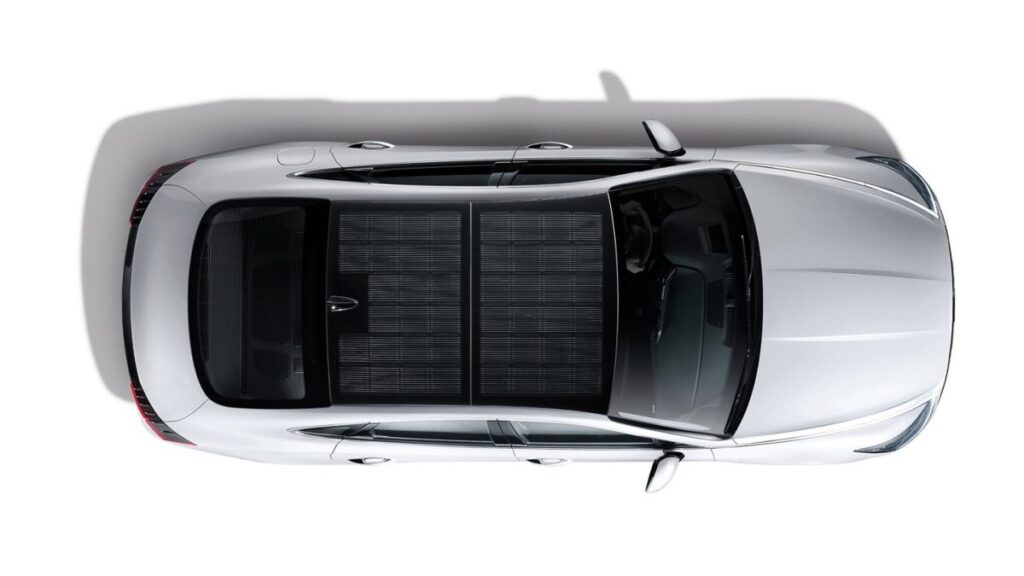
The newest model of the Hyundai Sonata hybrid is equipped with a 205W solar PV array that directly charges the car’s battery. It is estimated the PV will add about 2.5 miles of range per day. The solar panels feature 22.8% efficiency.
While this number may not jump off the page as impressive, the solar PV marks an improvement in efficiency for the vehicle that can add up to being significant. Two and a half miles per day for a year comes out to 912.5 “free” miles. Based on an average commuter’s yearly mileage of 10,000 miles, this represents an over 9% improvement to fuel efficiency.
Hyundai said its solar array system comes with efficient design advantages over competitor cars like the solar-roofed Toyota Prius. The Prius has a separate solar battery, requiring two stages of conversions to charge the high voltage driving battery and the auxiliary “starter” battery. The Sonata only converts once, directly feeding power through the panels, to a maximum power point tracker charge controller, and directly into the auxiliary batteries and drive batteries. This leads to a more efficient use of photovoltaic generation, said Hyundai.

The automaker said that the solar roof lessens the burden on the engine and prevents battery discharge. The Korea Insurance Development Institute estimates 4 out of 10 emergency on-road services relate to battery discharge, as parked car electrical systems require an average of about 720mAh per day, and black box cameras, which are increasingly being integrated in cars, require an additional 12,000mAh. With the solar roof, one hour of charging can provide 14,000mAh, supplying a car’s powered-off battery needs for the whole day.
While the range added by the PV is not dramatic, efficiency improvements are just that – improvements. Hyundai does not attempt to “greenwash” the product and recognizes that this is not the core of the vehicle’s power, but rather an ancillary system that provides a handful of benefits.
The solar roof-integrated “Limited” trim for the Sonata is rated at 47 miles per gallon and has a 192 horsepower engine. It has autonomous features like remote parking assist, highway driving assist, and has cameras for blind-spot views. Through an app, drivers can access the Sonata using their mobile phone as a key.
From: https://pv-magazine-usa.com/2022/03/24/hyundai-sonata-hybrid-is-equipped-with-a-solar-roof/
The post Hyundai Sonata hybrid is equipped with a solar roof appeared first on solarpanel4free.com.
]]>Read more
The post Puerto Rico solar tax has been defeated appeared first on solarpanel4free.com.
]]>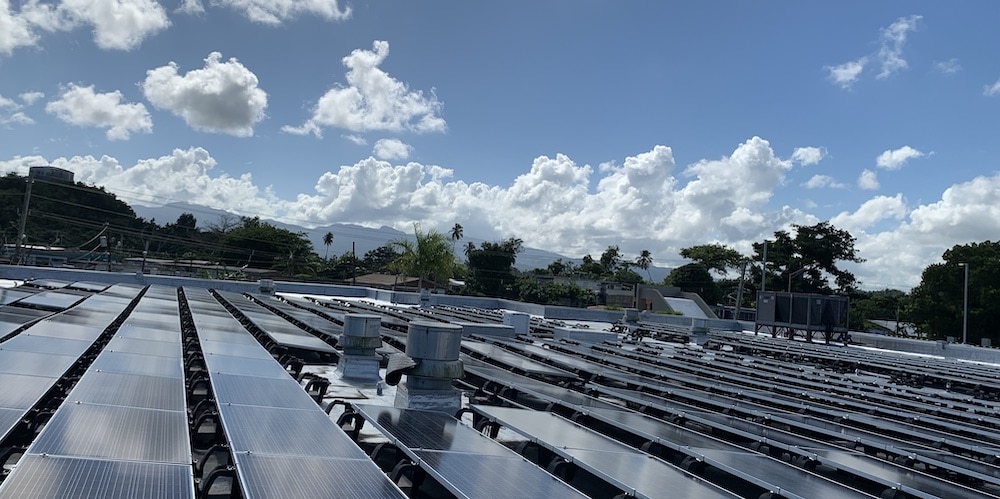
A proposed surcharge on customers with rooftop solar power in Puerto Rico, to fund repayment of the utility PREPA’s debt, is now off the negotiating table, due to actions by the president and the territory’s oversight board.
Puerto Rico’s 100% renewable energy law prohibits solar taxes, and the solar tax proposal would have required a change in that law. Solar trade group SESA-PR has been “fighting like crazy to defend that aspect of the law” in the three years since the solar tax was proposed, said the group’s president PJ Wilson in a webinar with members this week.
After three years of fighting the proposal, victory was achieved.
First, Puerto Rico Governor Pedro Pierluisi said the Government was terminating the PREPA Restructuring Support Agreement that included the tax proposal, exercising the right of each party to terminate the agreement. “Charges to private generation should not be imposed,” Governor Pierluisi said, adding that “there needs to be a considerable reduction” in the amount of PREPA’s debt that bondholders can recover.
SESA-PR had asked the executive branch of government last August “to pull out of the agreement,” said Wilson. “At the time, it seemed like an impossible ask, but we said ‘We’re asking you to do it anyway, since you’re against solar taxes, and it includes solar taxes.’”
The day after the governor’s statement, the Financial Oversight and Management Board for Puerto Rico said in a federal district court filing that it “currently does not anticipate” developing or negotiating a PREPA debt restructuring plan “requiring legislation.” In other words, because solar taxes would require legislation, the debt plan would not include solar taxes. Because legislation would not be needed, the oversight board denied the request of the Puerto Rico legislature to take part in the ongoing mediation that will resolve PREPA’s debt, while inviting the legislature to submit positions or proposals for consideration.
Helping set the stage, SESA-PR had previously “suggested and supported” two different resolutions in the Puerto Rico legislature, Wilson said, ultimately leading to the Puerto Rico House and Senate passing a joint resolution last November, which expressed “the wholehearted rejection,” in the words of Puerto Rico legislator Héctor Ferrer, of a debt restructuring agreement that included a solar tax.
Governor Pierluisi’s statement outlined the Government goals in ongoing talks, including “respect” for the Puerto Rico Energy Bureau’s role in setting electric rates and overseeing compliance with PREPA’s integrated resource plan, protecting PREPA’s pensioners, and complying with “the requirements and public policy objectives’ of Act 17-2019, the Puerto Rico Energy Policy Act, which bans solar taxes.
The nine parties to the ongoing mediation to resolve PREPA’s debt consist of government entities, bondholders, and the union of PREPA workers, whose pension funds are at risk, Wilson said. “We will be as close to that process as we can,” he said, “to remind everyone involved that any deal including solar taxes” would be “strongly opposed by not only SESA but also the united legislature and the governor’s own commitment against solar taxes.”
From: https://pv-magazine-usa.com/2022/03/23/puerto-rico-solar-tax-has-been-defeated/
The post Puerto Rico solar tax has been defeated appeared first on solarpanel4free.com.
]]>Read more
The post Texas has enough solar and wind planned to permanently shut down coal appeared first on solarpanel4free.com.
]]>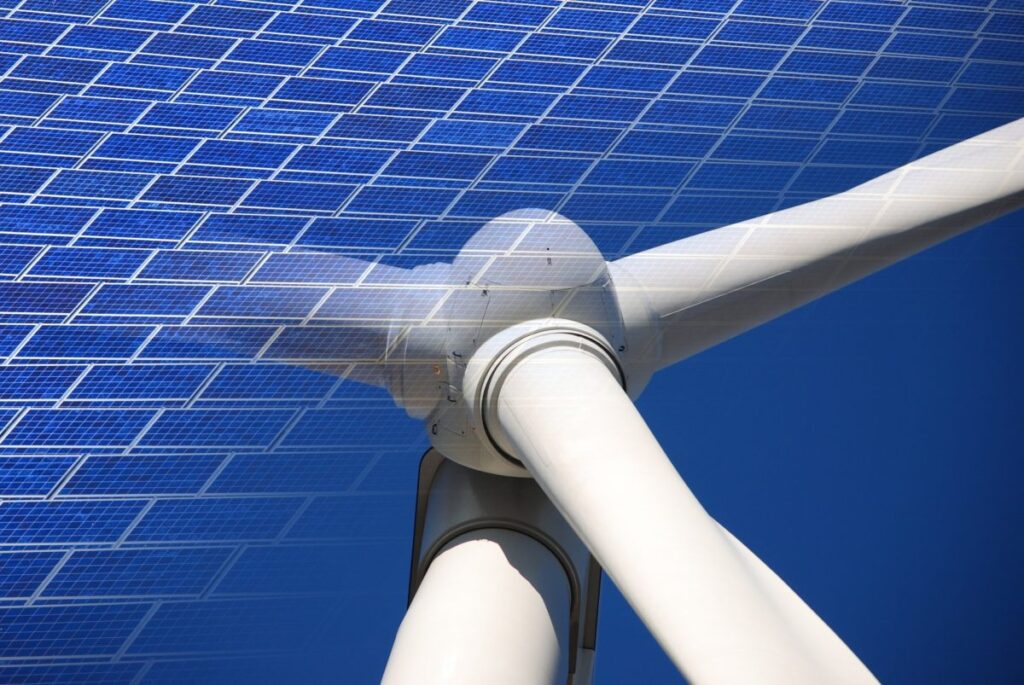
A research team at Rice University is modeling least-cost paths to a renewable energy future for Texas, a state that burns more coal and emits more sulfur dioxide than any other. The myriad of health and climate-related harms caused by coal do not need to persist any longer, according to the researchers.
The research team found that just a third of the wind and solar projects proposed to the Electric Reliability Council of Texas (ERCOT) by June 2020 could replace almost all of the state’s coal generation. Since June 2020, dozens of those projects have been built, and the queue of proposed solar projects has doubled.
“It’s almost always windy or sunny somewhere in Texas,” said Daniel Cohan, an environmental engineer at Rice University’s George R. Brown School of Engineering.
Cohan performed an analysis of peaks in production from West and South Texas renewable resources and suggested that the state’s power production can be made more reliable by adjusting where and when those resources are deployed. As a least-cost path, the model showed that 72 of the 108 wind projects, and 42 of the 262 solar projects proposed in queues could replace most coal in ERCOT. This would leave about 10% of coal output uncovered at certain seasons, and generating a surplus of energy at times of peak solar and wind harvest. Previous work by Rice researchers has shown that wind and solar power are generated at complementary times, with west Texas winds blowing most strongly at night, south Texas sea breezes peaking on summer afternoons, and solar power peaking midday.
“Even with complementary siting, there will still be hours when the sun isn’t shining and the wind isn’t blowing,” Cohan said. “Historically, the main challenge has been summer afternoons when air conditioners are running full blast, and the occasional deep freeze. Solar and coastal winds perform well during summer peaks, but can have lulls on some evenings when we’ll need something else to kick in.”
Generation mix shift
The state of Texas has no clean power mandate, and as a deregulated territory, market forces determine the competition between energy sources. ERCOT is largely independent of other US and Mexico power grids, said the report, with little opportunity for wholesale trade with other system operators. Due to this, any retiring of fossil fuel capacity must be met directly with new clean energy generation.
In 2019, the generation mix for ERCOT was 47% natural gas, 20% coal, 20% wind, 11% nuclear, and 2% solar and other. Coal consumption reached its peak for ERCOT in 2011 at about 110,000 tons of coal burned in the year. That number has come down considerably to about 61,000 tons in 2021. ERCOT processed 14GW of utility-scale solar interconnection requests last year, so the generation mix profile is set to fundamentally change.

Image: EIA
Bottlenecks
The challenge in Texas as many other parts of the US are transmission lines: An expansion is needed to connect the sunniest and windiest parts of the state to the cities.
“In Texas, that’s the biggest bottleneck slowing the growth of wind and solar,” Cohan said. “The bipartisan infrastructure bill that passed last year is a good start, but doesn’t have nearly enough funding for transmission. Also, by not connecting to other grids, Texas has missed out on opportunities to sell surplus wind and solar power to other states.”
A large capacity of coal plans were retired in Texas in 2018, and many ran on limited capacity during the February winter storms that cut power to much of the state earlier that year. Cohan said that natural gas peaker plants will still be needed for the time being to address extreme weather events. However, a report by the Federal Energy Regulatory Commission and the North American Electric Reliability Corporation found that issues with the natural gas supply caused 87% of the outages during the February storm, as wells and pipelines froze, and uninsulated gas plants failed to function.
As for coal, Cohan believes the end of days are here. “I think none of the power companies want to run coal plants long-term,” Cohan said. “They’re dirtier and costlier to operate than building wind and solar projects from scratch, and most utilities companies now have plans to reach net-zero carbon emissions by 2050, if not before.”
From: https://pv-magazine-usa.com/2022/03/22/solar-and-wind-projects-could-eliminate-coal-in-texas/
The post Texas has enough solar and wind planned to permanently shut down coal appeared first on solarpanel4free.com.
]]>Read more
The post Non-profits partner to help homeowners go solar in Brooklyn appeared first on solarpanel4free.com.
]]>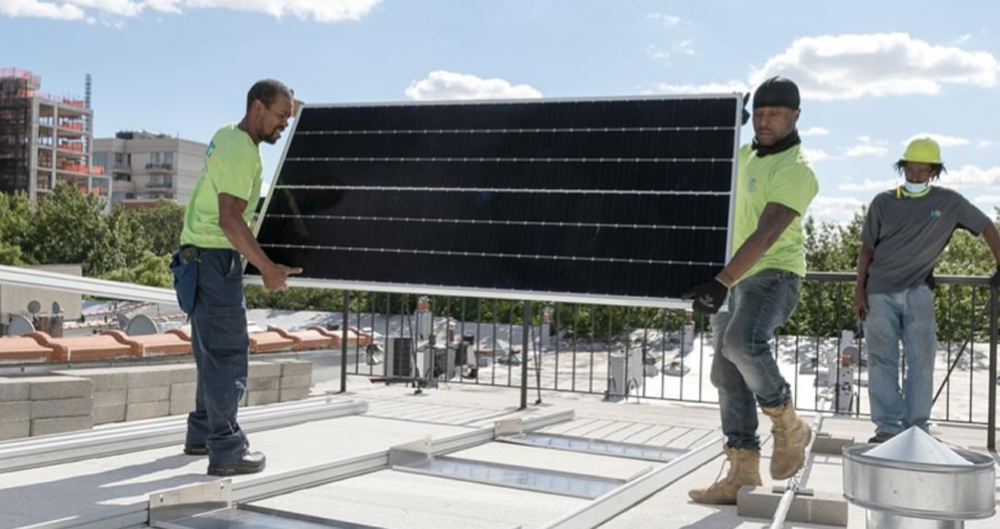
New York State has high electricity rates, and a Con Edison proposal could see rates raise further, by more than 17%, if approved by the New York State Public Service Commission. Three non-profits in Brooklyn have partnered to form Barrio Solar, an organization that aims to take some of the sting away from high bills faced by Brooklyn residents by helping them to go solar.
The campaign is open to all Brooklyn residents who own a 1- to 4-family house, and participants will receive free solar consultation from non-profits and discounted pricing through a solar purchasing group. For those who live in apartments or whose roof is not oriented for solar, Barrio Solar can connect them with local community solar projects that provide guaranteed utility bill savings.
The first 25 low- to moderate-income (LMI) homeowners that sign up will receive a campaign-specific incentive of $3,500 to apply toward the upfront cost of solar panels or roof repairs, Barrio reports. This subsidy is available to homeowner households earning up to 100% of the Area Median Income.

The non-profits that formed Barrio Solar are the Fifth Avenue Committee (FAC), Neighbors Helping Neighbors, and Solar One. FAC is a community development corporation that’s been around for 44 years. Its mission is to advance economic, social, and racial justice in New York City through integrated, community- centered affordable housing, grassroots organizing, policy advocacy, and transformative education, training, and services. FAC works to benefit over 5,500 LMI New Yorkers annually with its services.
Neighbors Helping Neighbors is a housing counseling agency founded in 1990. The organization promotes racial justice and housing stability for low to moderate income residents. And, Solar One runs educational programs to educate New Yorkers on the the benefits of clean energy. The organization is focused on education, workforce training, and technical assistance to fosters sustainability and resiliency in diverse urban environments. Solar One has facilitated more than 700 solar projects in the NYC metro region since 2014, primarily in low-income communities.
Barrio Solar will be hosting an online workshop on weatherization and solar on March 23 and another on solar and batteries on March 30.
From: https://pv-magazine-usa.com/2022/03/21/non-profits-partner-to-help-homeowners-go-solar-in-brooklyn/
The post Non-profits partner to help homeowners go solar in Brooklyn appeared first on solarpanel4free.com.
]]>Read more
The post Goldman Sachs activates 390MW solar, 561MWh storage in California appeared first on solarpanel4free.com.
]]>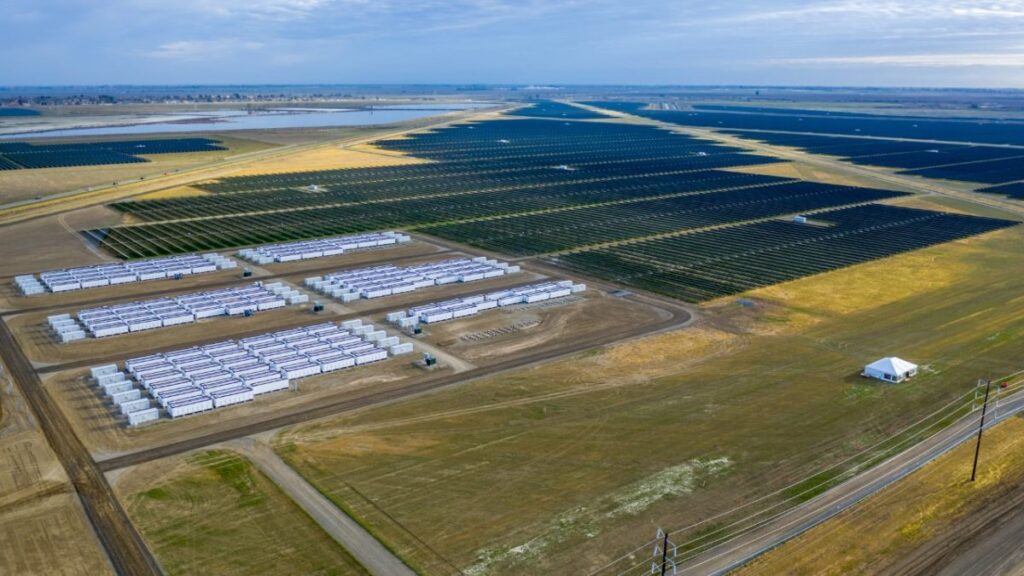
The renewable power division of Goldman Sachs announced it reached commercial operation of the Slate solar and energy storage project. The 390MW solar, 140.25MW/561MWh battery energy storage facility is one of the largest in the state. The project, which began development in 2015, was originally developed by Recurrent Energy, a subsidiary of PV manufacturer Canadian Solar.
The Kings County solar facility has five power purchase agreements (PPA) attached to California-based organizations. The Bay Area Rapid Transit (BART), Stanford University, and the Power and Water Resources Authority (PWRPA), a publicly owned organization that serves major water purveyors for irrigation. PWRPA has energy demand that fluctuates from 20 to 120 MW from winter to summer consuming 290 to 520 GWH of energy annually to convey, treat, and recycle water for their growers and consumers.

Notably, Stanford University announced it recently achieved 100% renewable energy operations. The university is in pursuit of net zero emissions by 2050.
Also served by the project’s PPA are Central Coast Community Energy and Silicon Valley Clean Energy, both organizations that offer opt-in contracts for customers who desire a higher share of renewable energy generation attached to their electric bills.
“Slate is a landmark project that will help California meet its leading renewable energy targets. We started developing Slate in 2015, and we’re proud that this project was contracted as one of the first utility-scale solar and energy storage projects in the state, thanks to the forward-thinking leadership among the projects’ customers.” Dr. Shawn Qu, chairman and CEO of Canadian Solar.
The project is expected to generate power equivalent to 126,000 California homes, displacing roughly 369,310 metric tons of carbon annually in the process. Over the past year, the project employed 405 workers at peak construction, 90% of which were local King’s County residents. Skilled tradespeople from local unions were hired for the construction.
Goldman Sachs’ renewable team was established in 2017 and has now sponsored more than 2.6GW of capacity across 850 solar and storage projects in 27 states.
The post Goldman Sachs activates 390MW solar, 561MWh storage in California appeared first on solarpanel4free.com.
]]>